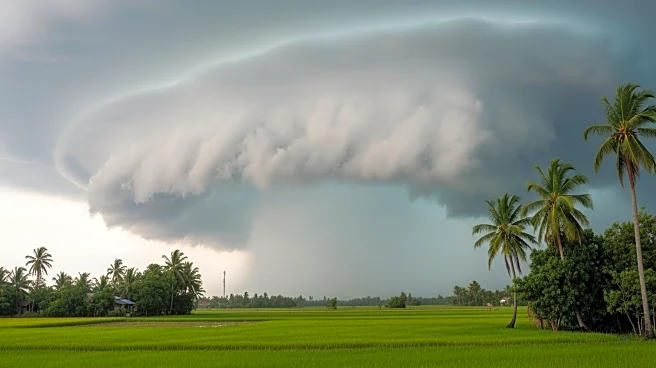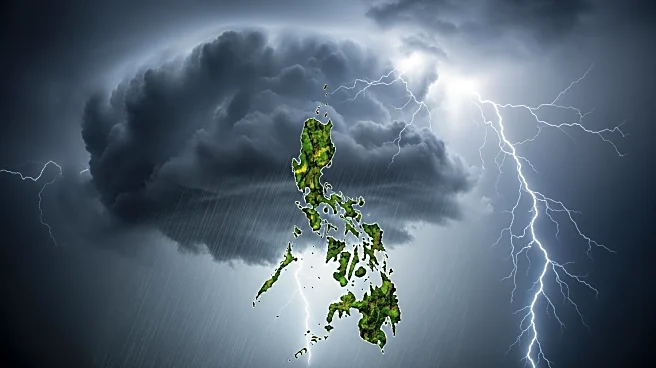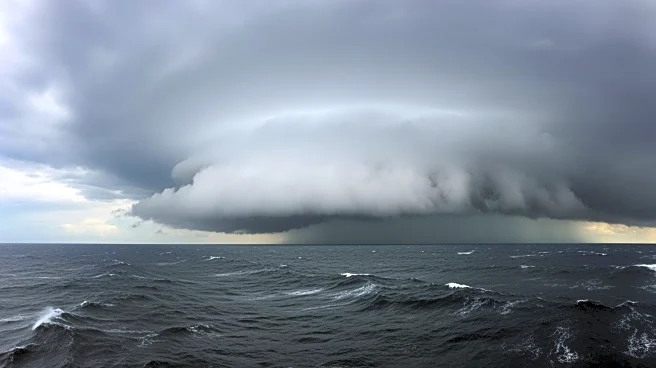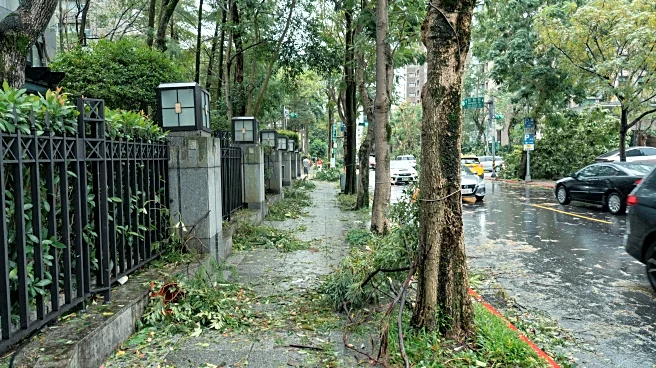What's Happening?
Typhoon Kalmaegi has caused significant destruction in Vietnam and Cambodia after initially impacting the Philippines. The storm has resulted in at least 114 fatalities in the Philippines, highlighting
the severe impact of natural disasters in the region. The typhoon's path of destruction has led to widespread damage, affecting infrastructure and displacing numerous residents. The storm's intensity and the resulting humanitarian crisis underscore the challenges faced by these countries in managing and responding to such catastrophic weather events.
Why It's Important?
The impact of Typhoon Kalmaegi is a stark reminder of the vulnerability of Southeast Asian countries to extreme weather events. The high death toll and extensive damage highlight the urgent need for improved disaster preparedness and response strategies in the region. The economic and social repercussions are significant, as affected communities face the daunting task of rebuilding amidst ongoing threats of similar natural disasters. This situation also emphasizes the importance of international aid and cooperation in providing relief and support to the affected areas.
What's Next?
As the affected countries begin recovery efforts, there will likely be calls for increased investment in infrastructure resilience and disaster management systems. International organizations and neighboring countries may offer assistance to support recovery and rebuilding efforts. Additionally, there may be discussions on enhancing regional cooperation to better prepare for and mitigate the impacts of future typhoons and other natural disasters.
Beyond the Headlines
The devastation caused by Typhoon Kalmaegi may prompt a reevaluation of climate change policies and adaptation strategies in the region. The increasing frequency and intensity of such storms could lead to more robust discussions on global climate action and the need for sustainable development practices to reduce vulnerability to natural disasters.












